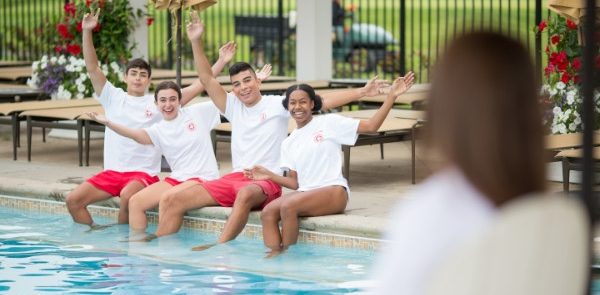Is Your Certification Up To Date?- Getting Certified or Recertified

Warmer weather is just around the corner! That means pool season is almost here, and every pool needs qualified lifeguards. Is it you?? Whether you’re a first-time lifeguard or a veteran, up to date certifications are a MUST. Guard for Life is here to help with all of your lifeguard certification needs. Guard for Life offers training courses nationwide throughout the year. Find a course near you, and get certified so you can start your lifeguarding career ASAP!!
First-time Lifeguards
Are you a rookie lifeguard? No problem! Guard for Life has got you covered. Guard for life partners with the American Red Cross and trains over 2,500 lifeguards nationwide each year. The purpose of the American Red Cross Lifeguarding course is to provide entry-level lifeguard participants with the knowledge and skills to prevent, recognize and respond to aquatic emergencies and to provide care for breathing and cardiac emergencies, injuries and sudden illnesses until emergency medical services (EMS) personnel take over. In order to lifeguard with Guard for Life, all-new lifeguards must successfully complete the lifeguard training which includes a pretest and CPR/AED training. Some lifeguard training courses will require the pretest being done prior to the start day. Learn more about each lifeguard certification class type here.
After passing the lifeguarding course, you’re officially a certified lifeguard! Nervous? Don’t be! You’ve got this! Take the process one step at a time. The first step is to pass the pretest. Here’s a little preview of what’s on the pretest and some tips to help you pass!
How do I pass the lifeguard pretest?
- You must be at least 15 years old before the final scheduled session of your course.
- Swim 300 yards continuously demonstrating breath control and rhythmic breathing. Candidates may swim using the front crawl, breaststroke or a combination of both but swimming on the back or side is not allowed. Swim goggles may be used.
- Tread water for 2 minutes using only the legs. Candidates should place their hands under the armpits.
- Complete a timed event within 1 minute, 40 seconds.
- Starting in the water, swim 20 yards. The face may be in or out of the water. Swim goggles are not allowed.
- Surface dive, feet-first or head-first, to a depth of 7 to 10 feet to retrieve a 10-pound object.
- Return to the surface and swim 20 yards on the back to return to the starting point with both hands holding the object and keeping the face at or near the surface so they can get a breath. Candidates should not swim the distance underwater. Exit the water without using a ladder or steps.
Tips to Pass the Pretest!
- Don’t burn yourself out! – There is no time limit on the 300 yard swim, so take your time! Don’t use up all of your energy trying to race through this first portion of the test. You’ll be too tired to complete the other sections.
- Learn your best dive! – During the timed event portion, American Red Cross allows you to surface dive in head-first or feet-first. Learn which dive you can comfortably do the fastest.
- Swim to the bottom! – During the timed event, some lifeguard candidates swim down just enough to grab the weight, and then swim back up. However, it’s faster to swim all the way to the bottom, grab the weight, place your feet on the bottom, and then use your legs to push yourself up.
- Hold on to the weight properly! – To pass this test, you need to keep BOTH hands on the weight. Don’t let go, and don’t drop it!
- Wear a swim cap! – Swim caps will keep hair out of your face and help you swim faster.
Been a lifeguard before? Get recertified!
Guard for Life offer tons of training classes throughout the year to make getting recertified easy!! Your lifeguard certification stays valid for 2 years. For the first 30 days after it expires, you have the option of taking a shorter review course (13 hours). If your certification has been expired for longer than 30 days, you’ll have to take the full training course which is completed in approximately 28 hours and 35 minutes.
How do I pass the lifeguard review course?
- Attend and participate in all class sessions.
- Demonstrate competency in all required skills and activities.
- Demonstrate competency in all required final rescue skill scenarios.
- Pass both the Section 1-CPR/AED for the Professional Rescuer and First Aid and Section 2-Lifeguarding Skills final written exams with minimum grades of 80 percent.
Lifeguard season will be here before you know it! Register for training, and make sure that your certification is up to date so that you can start lifeguarding with Guard for Life. Find local lifeguarding opportunities here!
